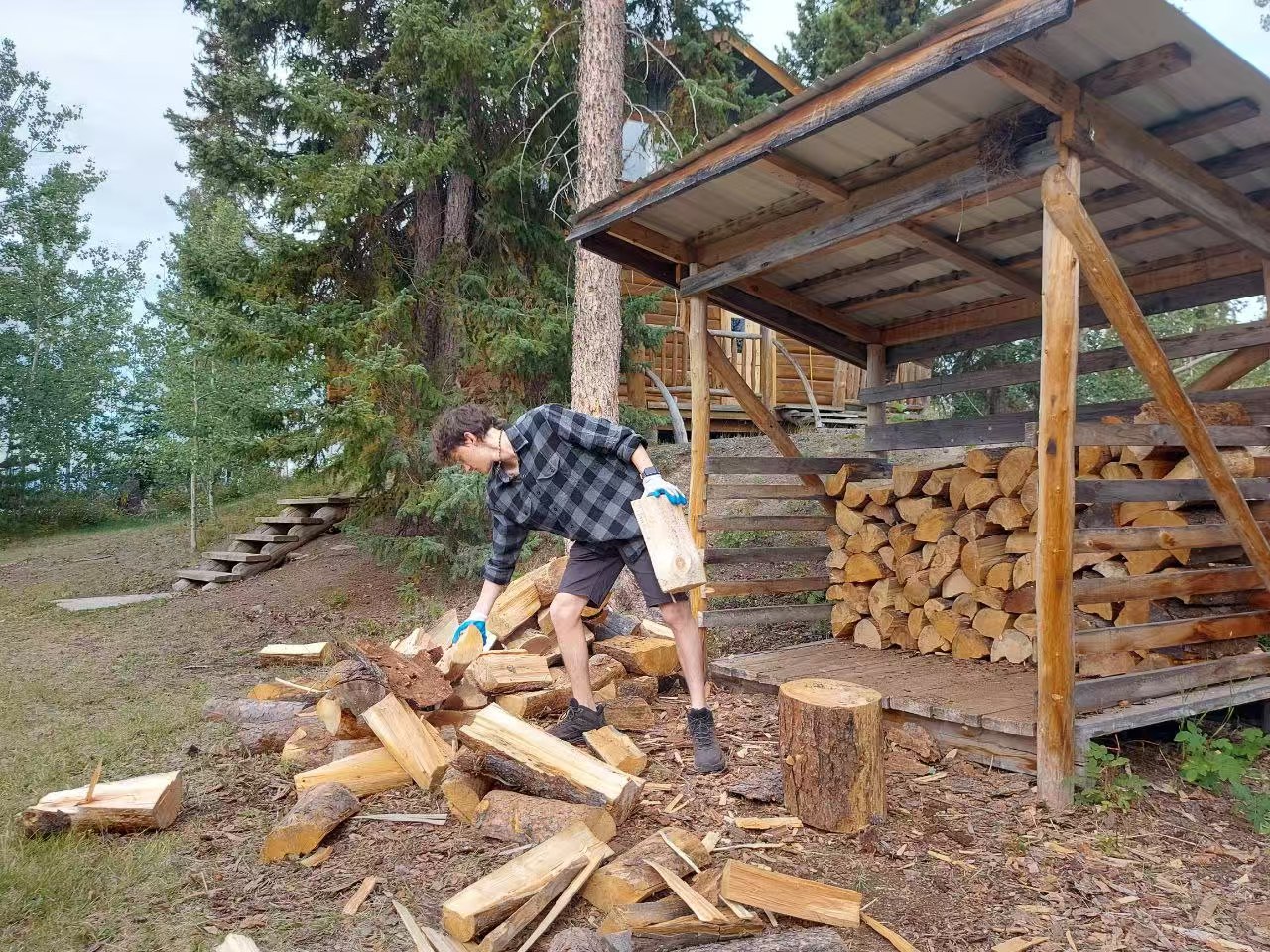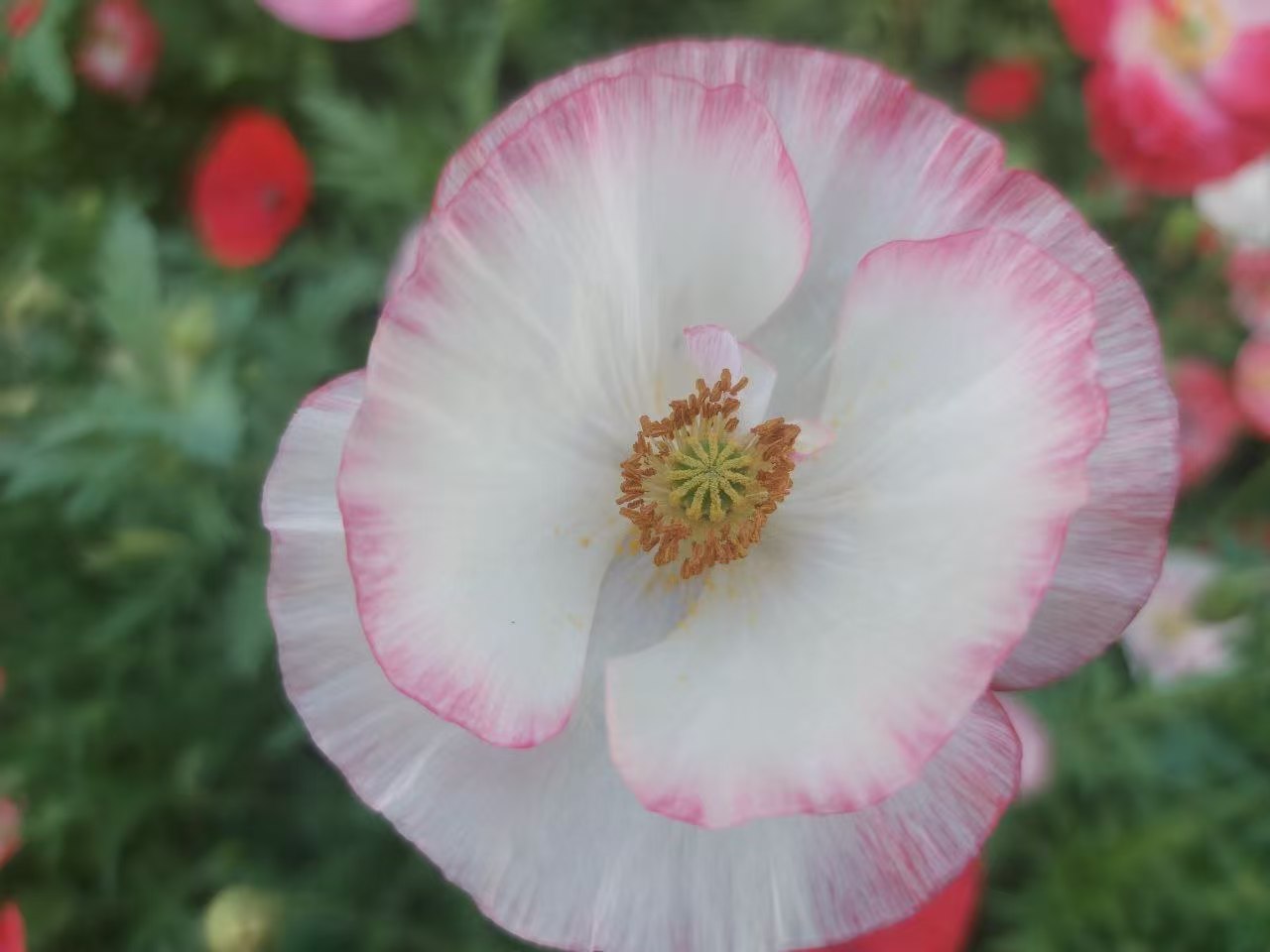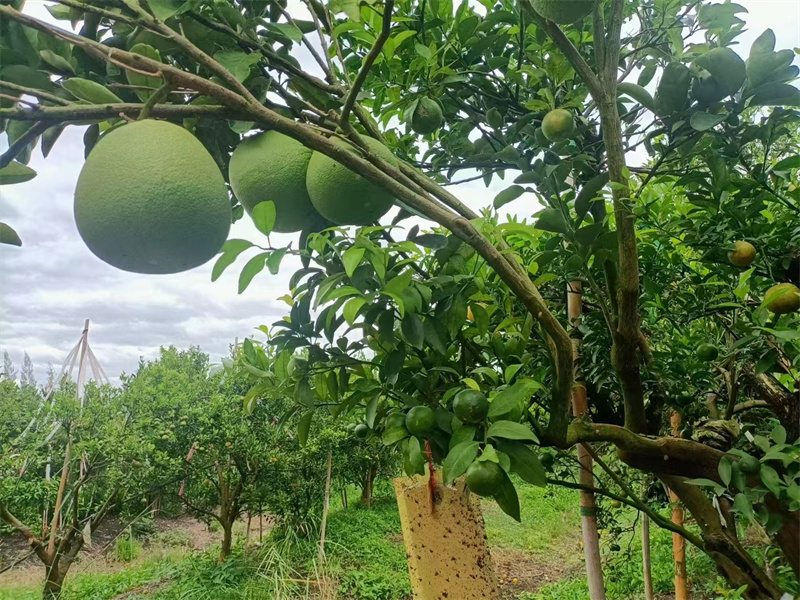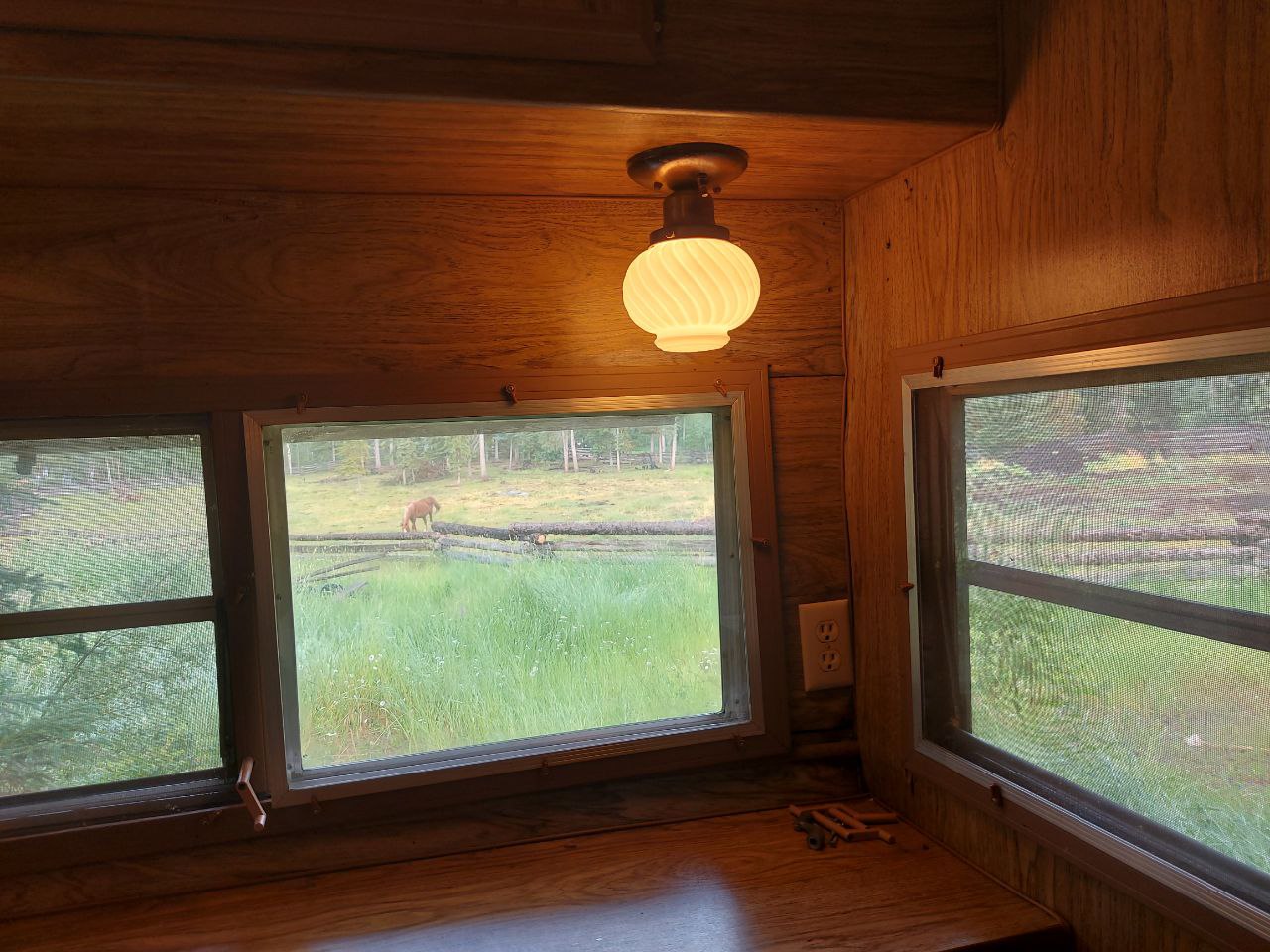|
|

|
Kailash Ecovillage
Located in Portland, Oregon, United States
Kailash Ecovillage is a sustainably focused community located on a two-acre site in inner SE Portland, Oregon, about four miles from downtown. We are located in the Creston Kenilworth neighborhood.
Our main building consists of 30 one-bedroom apartments. Two additional 2- bedroom apartments have been remodeled as a men’s dormitory and another shared living space.
An adjacent house serves as living space and office for the community managers. It has an additional unit with 4 rooms with shared kitchen, patio, and courtyard.
We have many shared areas, including a community room, shared laundry and mail room, recycling and composting areas, and a meditation space that doubles as a guest room.
Our extensive gardens consist of individual garden plots as well as communally managed spaces. The latter include a perennial fruit orchard and food forest, vineyards, berry patches, and areas for annual crops.
Currently we have about sixty residents.
To maintain affordability, Kailash Ecovillage uses a rental model. This allows individuals with lower income and those without prior housing ownership to experience intentional community. An alternate model for intentional communities is cohousing, but a condominium model requires substantial individual capital, or a mortgage, as well as significant monthly homeowner fees. Most of our residents would not be able to afford to live in a cohousing community.
Mission Statement
Kailash Ecovillage is a community committed to providing a sustainable, beautiful, and safe living environment for individual residents as well as the greater community.
Kailash Ecovillage Values Statement
We value:
• Sustainability: organic gardening, composting, local food production, frugal use of energy and resources, alternative sources of energy and water, reducing, reusing, recycling, human-powered transport
• Safety: ensuring community safety through a stringent screening process, neighbors looking out for each other, and other measures
• Respect: for other beings and our earth
• Diversity: our community includes different ethnic and cultural backgrounds, incomes, ages, family types, sexual orientations, and spiritual paths
• Children and elders
• Each others’ privacy
• Honesty
• Cleanliness
• Non-harming
• Non-stealing
• Simplicity
• Helpfulness
• Vegan community gatherings and celebrations: maintaining a vegan community meal allows all residents to participate. We welcome individuals to share any other dietary restrictions.
• Education: learning amongst ourselves and teaching the larger community about sustainability
• Open-mindedness: welcoming new ideas
• Experimentation: exploring new methods of sustainable urban living
History
The main building was constructed in 1959 as the Cabana Apartments. We have little information about the early years, but it appears it was a Hawaiian themed up-scale development. The space that is now the community room was called the Lanai Lounge and was apparently a party room. What is now the Men’s Dorm was the recreation room. Until several years ago the southwest area had a swimming pool open in the summer.
Unfortunately, the space fell on hard times due to poor management. It became known as the “meth” apartments. Residents witnessed shoot-outs in the parking lot and drug dealing in many of the units. Fully one quarter of the units became unlivable due to neglect. Transients were discovered living in the boarded up areas.
In 2007, Ole and Maitri Ersson, with the assistance of One Pacific Coast Bank, purchased the property and began its redevelopment as a model sustainable community. Twelve parking spaces were depaved to make way for new gardens. The lounge and recreation spaces, long boarded up, were remodeled as the community room and Men’s Dorm. A new emphasis was placed on recycling, composting, and gardening, with a focus on food production.
In 2010, the adjacent property, slated for a housing development, was re-acquired as part of the project, quintupling the available garden space. Since that time new covered bike parking and garden tool storage have been developed, as well as large areas for a fruit orchard, berry and grape patches, composting areas, and community gardens consisting of 46 individual garden plots and areas that are communally gardened with annual crops.
The main building has been retrofitted with a large solar project and all rooftop and remaining driveway water is now diverted to on-site rain gardens. Many individual units have undergone extensive renovations and updating. The adjacent house has been remodeled using state of the art energy conservation principles.
Community:
Currently, we are 59 residents.
While we all have our own spaces, we get together in community in various ways.
Of course, the dorm residents, and Amrita shared house residents, interact in their shared living spaces on a daily basis.
The rest of us, who have our own self contained living spaces, meet the community neighbors coming and going, in the mail room, doing laundry, or gardening our individual plots, or other special activities.
Additionally, we have regular get togethers in work parties (e.g., compost processing every 2 weeks), while group gardening (1-2 times per month during the gardening season), or at community nights (for crafts, sewing, or games), as well as potlucks and events, such as movie nights (as scheduled by residents).
The community is organized as teams for special purposes and as interested by different residents:
Garden Team: probably the most consistently active team, meets every month year round to discuss all gardening issues, including the individual plot community gardens, the ornamental areas such as the butterfly, hummingbird, native plant, and rain gardens, wildlife habitat areas, food forest, orchard, and grape and berry patches.
Group Gardens Team: This group, mainly composed of residents but also including neighbors, manages the communal cultivation of large gardens and divides the harvest among members. It chooses what to plant and organizes regular work and harvest parties.
Fruit Care Team: manages the berry patches, fruit orchard, and vineyard areas, dividing the harvest among members and the greater community.
Compost and Recycling: meets as necessary to discuss composting and recycling issues. Has held audits of the dumpsters to study ways of decreasing landfill waste. Also, organizes pickups of items being donated for charity.
Library Team: Started by a retired librarian, this team has cataloged our community media collection located in the community room.
Sustainable projects team: meets monthly to review the progress of on-going sustainable projects. Here is an example of a recent sustainable projects progress report.
Bike Team: meets as necessary to manage the bike parking and bike tools.
Web team: meets and works as needed to maintain the ecovillage web site.
Residents are also interested in developing community with our Portland neighbors. Several neighbors have plots in our community garden or participate in our group gardens program. Our community room is regularly used by community groups for various events. Our wood chip depot is open to any neighbors to help themselves to wood chips for their own gardening projects. We have developed a neighborhood interface area with bulletin board and public gardens. In fact, the development of this project was as part of a City Repair project which allowed us to introduce ourselves to many neighbors we had not yet met. One workshop participant actually lived here in 1962!
Housing
Status: We have land we have developed on
Area: 1.8 acres
Current Residence Types: Single-family homes, Multi-family homes, Room(s) in a house or building
Current Number of Residences: 34
Housing Provided: Rental
Land owned by: A subgroup of community members
Additional Comments:
30 one-bedroom units, one 2-bedroom unit, and 1 6-bed male dormitory in one building; adjacent 2 unit single family house with accessory dwelling unit, remodeled in 2013 using passivhaus principles
Membership
Adult Members: 56
Child Members: 5
Percent Women: 50%
Percent Men: 50%
Percent Transgender: 1-10%
Visitors accepted: Yes
Visitor Process:
Monthly public tours the first Saturday of the month, 3pm.
Contact us via email to arrange a private visit.
Open to new Members: Yes
Membership Process:
We rent units through Craigs List. Applicants have a tour and interview before proceeding with application and rental agreement.
Economics
Dues, Fees, or Shared Expenses: No
Shared Income: None
Required Labor Contribution per Week: 1
Open to members with existing debt: Yes
Additional Comments:
minimum 4 work parties and 4 meetings per year
Sustainability Practices
Energy Infrastructure: We use both systems.
Current renewable energy generation: Up to 25%
Energy sources: Solar, Biomass, Clean Energy from the Grid
Planned renewable energy generation: Up to 25%
Current food produced: Up to 25%
Planned food produced: Between 26-49%
Food produced locally: From 50-75%
Lifestyle
Common Facilities: Common House, Garden(s), Greenhouse(s), Vehicle Share, Library, Workshop, Outbuilding(s), Tractor & Farm Equipment, Fire pit, Swingsets & play areas, Internet
Internet Available: Yes, community provides it
Internet Fast?: Yes, it’s fine.
Cell Phone Service: Good for most people.
Shared meals: Rarely
Dietary Practice: Omnivorous (plants and animals), Paleo (no grains, dairy, processed foods, or legumes), Local (food sourced within 150 miles), Organic (no pesticides or synthetic fertilizers), GMO Free (only non-genetically modified organisms), Vegetarian Only (no animal meat; dairy and eggs okay) – Please check this only if you are 100% Vegetarian, Mostly Vegetarian, Vegan Only (plants only, no animal products) – Please check this only if you are 100% Vegan., Mostly Vegan, Opportunivore (dumpster diving, nature harvesting, etc.), Raw or Mostly Raw, Kosher, Halal, Dairy-Free, Gluten-Free
Dietary Choice or Restrictions: No – people may eat however they wish.
Special Diets OK: Yes
Alcohol Use: Yes, used seldomly, or ceremoniously.
Tobacco Use: No, this community does not permit tobacco use.
Additional Diet Comments:
Endeavoring to have more frequent shared meals.
Common room kitchen is strictly vegan.
Vegan community room gatherings, Omnivorous in individual private units and outside the community room.
Common Spiritual Practice(s): Ecumenical (accepts all religions or spiritual practices), Eclectic (integrates multiple religious or spiritual beliefs), Not a particularly spiritual or religious community, Christian, Buddhist, Jewish, Hindu, Wiccan, Protestant, Catholic, Native American, Unitarian Universalist, Paganism or Earth Religions, Mixed Eastern Philosophy or Practice, Atheist, Agnostic, Eclectic
Spiritual Practice Expected?: No
Education Style(s): Up to each family or individual
Healthcare Options: Up to each family or individual
Source: https://www.ic.org/directory/kailash-ecovillage/
http://www.kailashecovillage.org
|
|
 Haha, I’ve got a helper now!
Xuefeng
September 8, 2024
(Translation edited by Q
Haha, I’ve got a helper now!
Xuefeng
September 8, 2024
(Translation edited by Q
 Haha, I felt young again!XuefengYesterday morning, after breakfast, I started ch
Haha, I felt young again!XuefengYesterday morning, after breakfast, I started ch
 Papaver rhoeas: The Designated Flower of Lifechanyuan
by Xuefeng
August 20, 2024
Papaver rhoeas: The Designated Flower of Lifechanyuan
by Xuefeng
August 20, 2024
 Joyful Games and Warm Welcome for Gabi at Lifechanyuan's Thai Home
Qianzi Celest
Joyful Games and Warm Welcome for Gabi at Lifechanyuan's Thai Home
Qianzi Celest
 Chilean Girl Gabi Experiences the Life of Lifechanyuan Thailand Second Home Comm
Chilean Girl Gabi Experiences the Life of Lifechanyuan Thailand Second Home Comm
 Another Clean and Tidy Joy House
In the tourist resort Holy Land Home, the guide
Another Clean and Tidy Joy House
In the tourist resort Holy Land Home, the guide
 Post time 2017-10-21 13:05:41
|
3878views0replies
Show the author posts only
|View large image
Post time 2017-10-21 13:05:41
|
3878views0replies
Show the author posts only
|View large image
 |Descending
|Read mode
|Descending
|Read mode





 Favorites
Favorites Relay
Relay Shares
Shares Collection
Collection